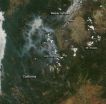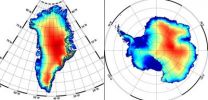(Press-News.org) Scientists from the University of Tübingen, Arizona State University, the Wellcome Trust Sanger Institute and the Swiss Tropical and Public Health Institute (Swiss TPH) isolated Mycobacterium pinnipedii from skeletons found in Peru which are at least 1000 years old. The pathogen is a relative of the TB bacterium that affects seals but only occasionally causes disease in humans today. These researchers assume that seals carried the pathogens from Africa to the Peruvian coast. "The link to sea lions was unexpected" comments Sebastien Gagneux, from the Swiss Tropical and Public Health Institute. "Although this strain can make people ill, it is extremely rare and certainly not a common form of a tuberculosis infection in humans today".
A new chapter in the history of tuberculosis in Latin America
The results shed new light on the history of tuberculosis in the Americas. It has long been assumed that humans introduced the disease to the 'New World' in the aftermath of colonization during the 15th century. «However, there were signs that the disease existed previous to the discovery of the New World. But it is the first time now that the pathogen of pre-Colombian tuberculosis could be identified», says Sebastien Gagneux from Swiss TPH.
New impulses for vaccine development
Tuberculosis remains a global threat. New drugs and vaccines are urgently needed to fight this poverty-related disease. Multi-drug resistance against first-line treatments is a growing threat in many countries. Therefore, the exploration of the evolutionary patterns of TB bacteria and their strategies to adapt to the human environment may help predict future patterns of the disease. This may also contribute to future drug discoveries and to the design of improved strategies for disease control.
INFORMATION:
Study
Pre-Columbian Mycobacterial Genomes Reveal Seals as a Source of New World Human Tuberculosis
Kirsten I. Bos, Kelly M. Harkins, Alexander Herbig, Mireia Coscolla, Nico Weber, Iñaki Comas, Stephen A. Forrest, Josephine M. Bryant, Simon R. Harris, Verena J. Schuenemann, Tessa J. Campbell, Kerrtu Majander, Alicia K. Wilbur, Ricardo A. Guichon, Dawnie L. Wolfe Steadman, Della Collins Cook, Stefan Niemann, Marcel A. Behr, Martin Zumarraga, Ricardo Bastida, Daniel Huson, Kay Nieselt, Douglas Young, Julian Parkhill, Jane E. Buikstra, Sebastien Gagneux, Anne C. Stone, and Johannes Krause
Contact
Sebastien Gagneux, Schweizerisches Tropen- und Public Health-Institut (Swiss TPH)
Sebastien.gagneux@unibas.ch
About the Swiss Tropical and Public Health Institute (Swiss TPH)
The Swiss Tropical and Public Health Institute (Swiss TPH) is one of Switzerland's leading public and global health institutions. Associated with the University of Basel, the Institute combines research, teaching and service provision at local, national and international level. The Swiss TPH is a public sector organisation and receives around 17% of its budget of approximately 80 million francs from core contributions from the cantons of Basel-Stadt and Basel-Landschaft (10%) and from the federal government (8%). The remainder (82%) is acquired by competing for funds. The Institute has more than 600 employees working in 20 countries. Professor Marcel Tanner is head of the Institute.
Seals introduced tuberculosis to the New World
2014-08-20
ELSE PRESS RELEASES FROM THIS DATE:
Satellite eyes a big influence on Tropical Storm Karina
2014-08-20
NOAA's Central Pacific Hurricane Center noted that Tropical Storm Karina's next move is based on its interaction with Tropical Storm Lowell.
Lowell is positioned to the east of Tropical Storm Karina in the Eastern Pacific Ocean. Karina is still well over 1,000 miles away from Hawaii and has become almost stationary as the mammoth Tropical Storm Lowell creeps closer to it. The CPHC expects Karina to start drifting eastward and away from Hawaii starting Thursday, August 21, as Karina starts being affected by Lowell's massive circulation.
On August 20, NOAA's GOES-West ...
Beaver complex and July complex wildfires in California
2014-08-20
The Beaver Complex is comprised of the Salt Creek Fire (20 miles northwest of Medford) and the Oregon Gulch Fire (15 miles east of Ashland), lightning-started fires that started on July 30-31, 2014. After it was first discovered on July 31, the Oregon Gulch Fire rapidly moved southeast from the Cascade Siskiyou National Monument into the Soda Mountain Wilderness Area, from Jackson County into Klamath County, and then into California. To date 35,302 acres have been affected. The wildfire complex is currently 100% contained. Per the Inciweb site total cost of this complex ...
Survey finds veterans generally satisfied with mental health care
2014-08-20
A survey of U.S. veterans receiving mental health services from the Veterans Health Administration finds general satisfaction, but also significant room for improvement among all areas studied.
The RAND Corporation study, conducted in 2008 and 2009, found that patients with a substance use disorder were less satisfied than other veterans who received mental health services. Those with substance abuse problems also were less likely than others to report that staff listened to them or respected their decisions.
The findings, published in the journal Psychiatric Services, ...
Recovery reversal seen in Oregon study of returning concussed athletes
2014-08-20
EUGENE, Ore. -- When are athletes who have suffered concussions ready to return to action? A new University of Oregon study has found that high school athletes who head back on the field with medical clearance within 60 days experience a significant regression in their abilities to simultaneously walk and do simple mental tasks.
The regression, as seen in changes in their balance and/or altered walking speed, was found in 12 of 19 athletes. Ten of the 12 had returned to activity in less than a month. Seven athletes, who performed similarly to uninjured control subjects, ...
Scientists learn more about rare skin cancer that killed Bob Marley
2014-08-20
Cancer Research UK scientists have discovered that acral melanomas – the rare type of skin cancer that caused reggae musician Bob Marley's death – are genetically distinct from other more common types of skin cancer, according to a study (link is external) published in the journal Pigment Cell & Melanoma Research.
Acral melanoma most often affects the palms of the hands, soles of the feet, nail-beds and other hairless parts of the skin. Unlike other more common types of melanoma, it's not caused by UV damage from the sun.
The team, from the Cancer Research UK Manchester ...
Drexel study: Enhanced communication key to successful teamwork in dynamic environments
2014-08-20
From management consulting projects to research and development laboratories to hospital trauma centers, organizations of all types are increasingly creating teams whose members have diverse professional backgrounds. While the allure of these cross-functional teams is their ability to use their diverse knowledge to solve complex problems, not all such teams are able to reach their full potential.
According to new research led by Christian Resick, PhD, an associate professor of management in Drexel University's LeBow College of Business, these teams need to master the ...
Highs and lows: Height changes in the ice sheets mapped
2014-08-20
Researchers from the Alfred Wegener Institute in Germany have used satellite data to map elevation and elevation changes in both Greenland and Antarctica. The new maps are the most complete published to date, from a single satellite mission. They also show the ice sheets are losing volume at an unprecedented rate of about 500 cubic kilometres per year. The results are published today in The Cryosphere, an open access journal of the European Geosciences Union (EGU).
"The new elevation maps are snapshots of the current state of the ice sheets," says lead-author Veit Helm ...
Turning waste from rice, parsley and other foods into biodegradable plastic
2014-08-20
Your chairs, synthetic rugs and plastic bags could one day be made out of cocoa, rice and vegetable waste rather than petroleum, scientists are now reporting. The novel process they developed and their results, which could help the world deal with its agricultural and plastic waste problems, appear in the ACS journal Macromolecules.
Athanassia Athanassiou, Ilker S. Bayer and colleagues at the Italian Institute of Technology point out that plastic's popularity is constantly growing. In 2012, its production reached 288 million tons worldwide, but its ubiquity comes at a ...
Celebrating 100 years of crystallography
2014-08-20
To commemorate the 100th anniversary of a revolutionary technique that underpins much of modern science, Chemical & Engineering News (C&EN) magazine last week released a special edition on X-ray crystallography — its past, present and a tantalizing glimpse of its future. C&EN is the weekly news magazine of the American Chemical Society (ACS), the world's largest scientific society.
The technique got its start when German physicist Max von Laue published the first paper on X-ray diffraction from a crystal in 1912. In the century following von Laue's discovery, which was ...
Teen sleeplessness piles on risk for obesity
2014-08-20
Teenagers who don't get enough sleep may wake up to worse consequences than nodding off during chemistry class. According to new research, risk of being obese by age 21 was 20 percent higher among 16-year-olds who got less than six hours of sleep a night, compared with their peers who slumbered more than eight hours. (The Centers for Disease Control and Prevention recommends nine to ten hours of sleep for teenagers.)
Researchers at the Mailman School of Public Health at Columbia University and the University of North Carolina Gillings School of Public Health are the first ...



